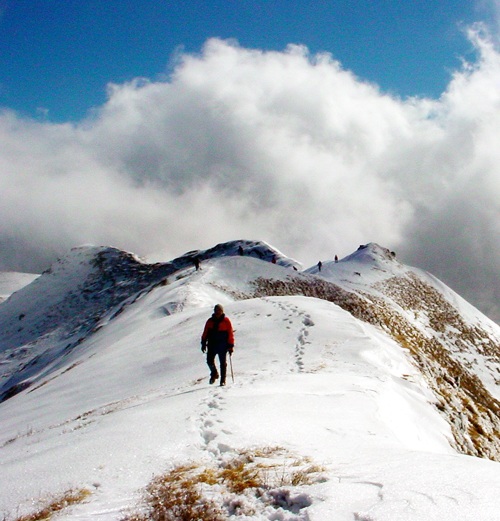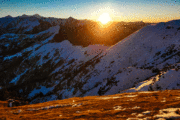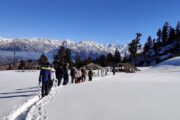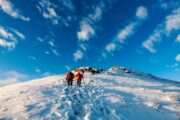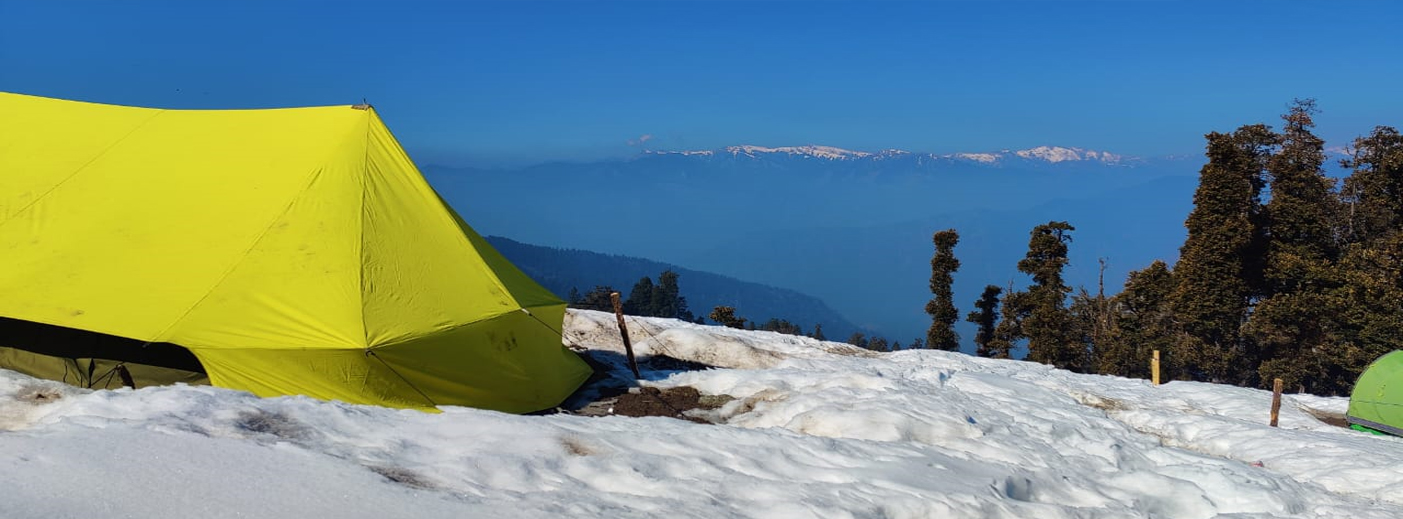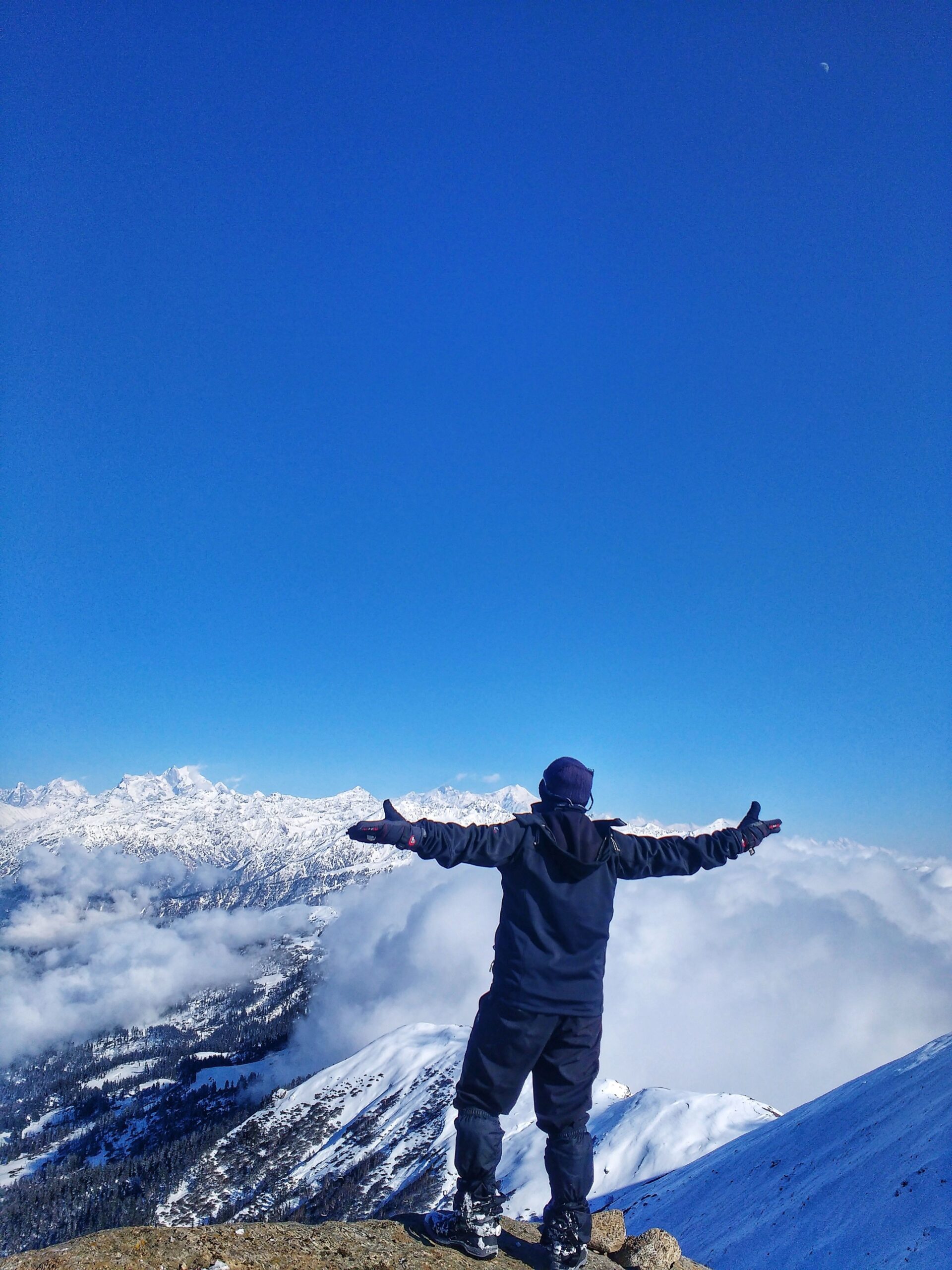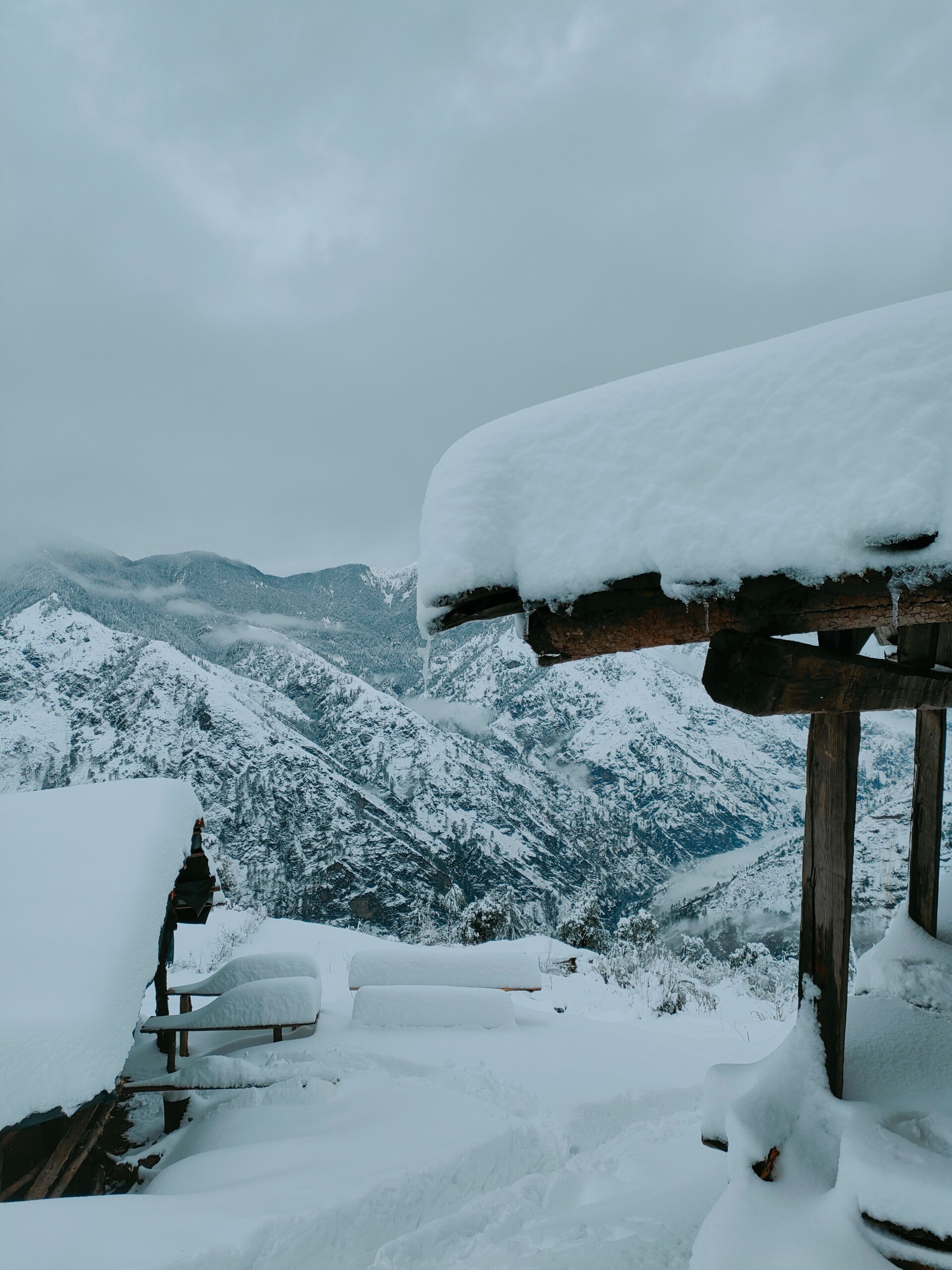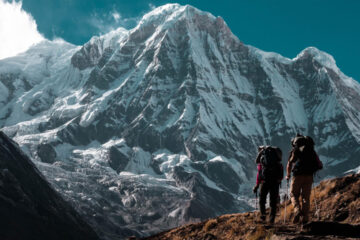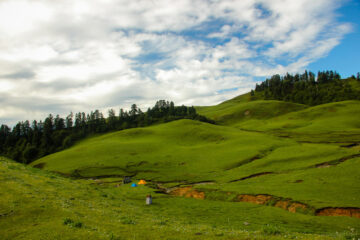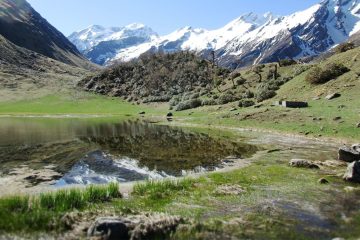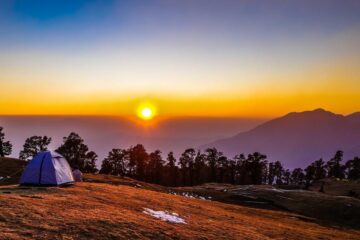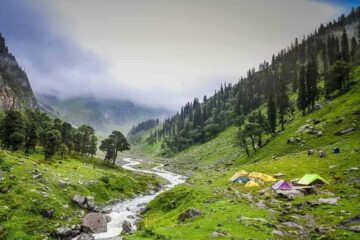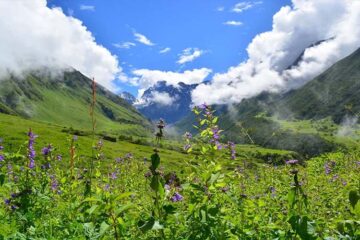Kedarkantha – Best Winter Snow Trek
Kedarkantha Trek, one of the most famous wintry weather treks in Uttarakhand, is a trekker’s pride and a rookie’s rite of passage due to its relative ease.Covered in glowing snow at some stage in the winter, this trek gives a breathtaking view of the majestic Himalayan peaks. It also provides trekkers with a once-in-a-lifetime opportunity to experience life in the most remote villages during the dead of winter!
The unrivalled splendor, surprising perspectives of fascinating villages, meadows, snow paths, and dramatic panoramas dotted with adorable lakes, mountains, tranquil rivers, and the exceptional Himalayan peaks await you on the Kedarkantha trek.
The Kedarkantha trek also provides an excellent opportunity to view the scenic splendour and enjoy the lifestyles of remote villages in the Uttarakhand Himalayas.
Key Highlights & Scenery:
- Winter Appeal: Sought-after snow trek in India, covered with a pristine white blanket of snow in winter.
- Surrounding Forests: Flanked by verdant forests of deodar, chir, and oak.
- Summit Views (Altitude: 12,500 ft): Offers mesmerizing and awe-inspiring panoramic views of peaks like:
- Black Peak
- Bandarpunch
- Swargarohini
- Devkyara
- Vijay Top
- Rupin Pass
- Chainsheel Valley
- Additional Views: Offers views of Purola, Mussoorie, and Dhungiri.
- Trail Safety: The ascent trail keeps the group intact, minimizing the fear of getting lost.
- Other Offerings: Rich and diverse flora and fauna, frozen lakes, burbling streams, replenished water sources, chilling breeze, roaring cataracts, and the vibrant culture of the region.
Trek Specifications:
- Distance: Consolidated distance of 18 km.
- Difficulty: Described as an easy trek, ideal for first-time trekkers with little experience.
- Location: Situated in the Uttarkashi district of Uttarakhand in the West Himalayan region, housing the Govind Wildlife Sanctuary.
Fitness Requirement:
- Physical Fitness is of utmost importance.
- Stamina Test: You must ensure you can cover at least 4 km in 30 minutes before enrolling to maintain the required stamina.
Day 1: Arrival at Sankri
Altitude: 6,400 feet
220 km drive – approx 10 hours
Trekkers will be picked from Dehradun at 6:30am in a Tata Sumo or a similar vehicle
Expected arrival time at Sankri – 5:00 pm
BSNL network erratic
Day 2: Sankri to Juda-ka-Talab
Altitude: 6,400 feet to 9,100 feet
4 kms trek, approx 5 hours
The trail passes through dense pine forests, maple trees, few streams and finally opens out to beautiful meadows
Stay in tents
Day 3: Juda-ka-Talab to Kedarkantha Base
Altitude: 9,100 feet to 11,250 feet
4 kms trek, approx 2.5 hours
Most of today’s trail is on a ridge, under oak trees
You will also pass through some meadows where you can spot shepherd log huts
Peaks :- Bandarpoonch, Swargarohini, Kala Nag and Ranglana stand among the others
Stay in tents
Day 4: Kedarkantha base to Kedarkantha peak; descend to sankri .
Altitude: 11,250 feet to 12,500 feet to 6400 feet
13 kms trek, approx 8-9 hours
Spend some time at the summit and descend back to the base camp by noon for lunch
Post lunch, descend down to sankri.
Reach Sankri by evening.
Stay in homestay.
Day 5: Departure day (Sankri to Dehradun)
Distance: 220 km drive, approx 10 hours
You will be dropped at Dehradun station in a Tata Sumo or a similar vehicle
Day 1- Dehradun - Sankri
Your Kedarkantha adventure officially kicks off from Dehradun Railway Station, where you’ll be greeted by the A1 Himalayas excursion consultant. This day is dedicated to the scenic road journey to the trek’s base camp, Sankri Village.
The Road to the Mountains
You’ll embark on a memorable drive, traveling approximately 193 kilometres to Sankri, a journey that typically takes between 9 to 10 hours. The route is a traveler’s delight, winding its way first through the famed Mussoorie, often called the Queen of the Hills, and passing numerous other points of interest along the way.
The drive plunges you deeper into the Himalayan foothills, taking you through stretches of suitable pine forests, which gives you an early taste of the natural beauty that awaits on the trek itself.
Arrival at Sankri
Upon reaching Sankri Village, you’ll notice its prime location. Sankri is strategically situated amidst the ridges, benefiting from excellent solar positioning right at the edge of the Himalayas. Its most striking feature is the astounding view of Swargarohini Peak that dominates the evening skyline.
After checking into your hotel, you’ll have time to explore this scenic hamlet before gathering for a delicious dinner. Following dinner, you can prepare for the trek ahead and enjoy a well-deserved rest for a chilled night before the trekking begins the next morning.
This first day sets a relaxed pace, focusing on acclimatization during the long but beautiful drive to the starting point.
Day 2: Sankri to Juda Ka Talab – Into the Pine Wilderness
Today marks your true immersion into the Kedarkantha trek as you leave the road behind and take your first steps on the mountain trail.
The Ascent Through the Forest
After a warm and delectable breakfast at your hotel in Sankri, you will meet your team and begin the day’s ascent. The trail immediately plunges you into the thick, dense forests characteristic of the Kedarkantha region.
The initial climb involves navigating through these beautiful woods, filled with the aroma of pine and oak. While the path is defined, the ascending gradient keeps you engaged, serving as the first real test of your stamina. As you gain elevation through the foliage, you will begin to catch awe-inspiring glimpses of snow-blanketed mountain peaks peeking through the trees—a tantalizing preview of the grand views awaiting you at the summit.
Arrival at Juda Ka Talab
The trek culminates at Juda Ka Talab (also referred to as Jadu Ka Talab in earlier context), which sits majestically at an altitude of approximately 2800 metres (or 9100 feet) above sea level. This location is famous for the serene, high-altitude lake that, depending on the season, may be frozen or partially covered in ice and snow, creating a stunning visual contrast with the surrounding greenery or white landscape.
The entire walk today is expected to take around four to five hours. After covering this distance, you will reach the campsite. You will have some time to settle in, perhaps stroll around the tranquil lake, before you are served a mouth-watering evening meal. Following dinner, you can settle in for a chilled night under the mountain stars.
This first trekking day provides a gradual introduction to the trail, rewarding your efforts with beautiful forest scenery and the charm of the high-altitude lake.
Day 3: Juda Ka Talab to Kedarkantha Base Camp – Emerging into the Meadows
Today is a relatively shorter trekking day, designed to position you perfectly for tomorrow’s major ascent to the summit.
Early Start and Forest Traverse
You will rise early in the morning to catch the warm breakfast accompanied by a beautiful sunrise view over the lake. After fueling up, you’ll break camp and commence the trek towards Kedarkantha Base Camp.
The trail today covers a short distance of approximately 4 kilometres, which should take about 2.5 to 3 hours at a moderate pace. The path is well-marked, making navigation straightforward. You will continue your journey passing through diverse woodland ecosystems, specifically crossing through forests of cedar, maple, and oak.
Reaching the Base Camp Altitude
As you progress, the dense forests will begin to open up into expansive meadows. This transition offers a dramatic change in scenery as the valley of the Himalayan region gradually unfolds before your eyes, showcasing magnificent wide-angle views. The Kedarkantha trail remains beginner-friendly and easy to climb, even during peak winter, ensuring an enjoyable trek.
Your destination, the Kedarkantha Base Camp, is situated at an altitude of 3430 metres (or 11,250 ft).
Evening at High Altitude
Upon reaching the campsite, you can rest for a while and refresh yourself. Take a small walk around the campsite to stretch your legs and admire your surroundings.
As this is a high-altitude campsite, be prepared for the significant drop in temperature after sunset. The organizers recommend you layer up with proper clothing for protection against the high cold waves. Tonight, you will enjoy a nice hot dinner followed by a chance to soak in the beauty of the clear night sky with an abundance of twinkling stars. You must get proper sleep in your tents tonight to ensure you are fully rested for the early morning summit push tomorrow.
Day 4: The Summit Push and Grand Descent to Sankri
This is the highlight day of the trek, starting in the dark for the summit bid, followed by a significant descent all the way back to Sankri.
Summit Attempt (02:00 AM Start)
- Start Time: You will wake up very early, around 02:00 AM.
- Preparation: Have a mild breakfast and get all your gear ready for the climb.
- The Climb: You will start walking up the mountain to reach the summit. This day is described as very demanding, though the hiking trail itself is noted as “mild” (this might refer to the path structure rather than the physical exertion required at that hour).
- The Reward: Upon reaching the pinnacle (peak), you will witness incredible perspectives of numerous mountain ranges, including the Yamunotri, Gangotri, Kinnaur, and Kailash ranges, as well as the cascading valleys below.
- Sunrise: You will enjoy and witness the stunning dawn from the peak. Be sure to capture the moments of the surrounding mountains and valleys.
Descent to Sankri
- Return to Camp: After enjoying the sunrise, you will return to your Base Camp.
- Lunch: You will have lunch at the Base Camp.
- Final Descent: Immediately after lunch, you will descend right all the way down to the Sankri homestay.
Day 5: Return Journey from Sankri to Dehradun
- Morning in Sankri: You will likely have breakfast at the homestay in Sankri. This is your last chance to take in the peaceful mountain atmosphere and the views of Swargarohini Peak from the base camp village.
- The Drive: You will board your vehicle for the long road journey back to Dehradun.
- Duration and Distance: As mentioned previously, this is a long drive, covering approximately 220 kilometres and taking around 9 to 10 hours.
- Arrival in Dehradun: You are expected to arrive back in Dehradun in the late evening (likely between 7:00 PM and 10:00 PM, depending on the final drive time), marking the official end of your Kedarkantha trek experience.
By Air :-
Dehradun’s Jolly Grant Airport is the airport serving Dehradun, located approximately 25 km from the city. There is a daily flight from Delhi to Dehradun. Come at some point early if you are making plans to return home via flight.
By Train :-
Take a one-day trip from Delhi to Dehradun.
- Nandadevi Express – Train no: 12205 (Departure 11:50pm; Arrival – 5:40am)
- Dehradun Express – Train no: 12687 (Departure – 9:10pm; Arrival – 5:00am)
By Bus:-
There is a normal bus provider from Delhi to Dehradun and from Delhi to ISBT Kashmere Gate. We would recommend you take the most effective government buses from ISBT Kashmere Gate. Private buses ply from outdoor ISBT and they’re now no longer agreeable with worthiness. Usually, buses drop you at Dehradun ISBT. From there, you need to come to Dehradun Railway Station.
Includes
- Meals during the trek
- Transportation from Dehradun to Sankri and back to Dehradun.
- Dinner on arrival day in Sankri
- Forest Permits/Camping Charges (only if availing transportation through A1 Himalayas). Included only up to amount charged for Indian Nationals
- Tents, Sleeping bags, mats
- Safety Equipment includes static rescue rope, seat harness, carabiners, pulleys
- Trek guide, cook, helpers, porters & mules for carrying common luggage
- Services of a Certified Trek Leader
Excludes
- Meals during road journeys
- Carriage of Personal Bags during the trek
- Any kind of Insurance
- Any expense of personal nature
- Any expense not specified in the inclusion list.
Note :
Normally a1himalayas expect to carry your personal luggage on your own, if you wish to offload your backpack, you can give it to Mule.
Charges of offloading backpack:- Contact Us
The backpack cannot weigh more than 11 kgs. Backpack should have waterproof cover. Suitcases/strolleys/ bags will not be allowed.
Paying the Trek /Tour fee:
The fee can be paid by online transfer/Check deposit/Cash deposit/Demand draft. Instruction for payment will be forwarded along with your confirmation email. When your transfer is done, please e-mail us a confirmation mail with your transfer details, so that we can follow up your reservation efficiently.
1) Trekking Shoe/Snow Shoe
2) Rucksack/Back Pack
3) Rucksack cover (Waterproof)
4) Daypack/Knapsack
5) Undergarments/Innerwear
6)Woolen socks
7) Woolen gloves
8) Waterproof gloves
9) T-shirt
10) Trek pants
11) Camp sandal
12) Balaclava/Woolen skull
cap/Monkey Cap
13) Sun cap/Wide-brimmed
Hat/Bandana
14) Walking Sticks/Trekking
Poles/Ski Poles
15) Heavy Jacket
16) Windproof Jacket/Wind
Cheater
17)Raingear/Poncho/Waterproof clothing
18) Water bottle/Hydration pack
19) Sunscreen lotion
20) Sunglasses
21) ChapStick/Cold &
Moisturizing cream
22) Toothbrush and toothpaste
23) Towel
24) Hand sanitizer
25) Tissue roll ( Toilet)
26) Anti Fungal Powder
27) Torch/Head Lamp with extra batteries
28) Knee cap
29) Camera with extra cells
30) Dry food items
31) Personal first-aid kit
32) Medicines (This is a simple
guide line and a doctor’s
consultation is recommended.)
Altitude is a risk. Before you begin the trek, you should be aware of the effects of high altitude on your body. Acute Mountain Sickness (AMS) symptoms include a moderate headache, nausea, and overall discomfort.
Reponse: If you have any of these symptoms, notify the trek leader immediately and follow his advice. To deal with the scenario, each campsite contains a stretcher, a fully prepared first aid kit, and oxygen cylinders.
Weather Risk : No one can guarantee snow, rain, or sunlight, even if we keep a constant eye on the weather. Please keep in mind that your safety is our primary priority, and if the weather isn’t cooperating, we won’t leave the campsite.
Response: The choice to go or wait for better weather will be made solely by the Trek Leaders and Guides.
Risk: Injury is a possibility. While trekking across difficult terrains, minor injuries such as calf sprains, bruising, and other minor ailments are prevalent. Serious injuries, such as fractures or significant cuts, are quite uncommon.
Response: All of our Trek Leaders are trained in wilderness first aid. They’ve been taught to deal with emergencies and have a well-stocked first-aid equipment to deal with minor injuries. In the event of major injuries, the patient is carried to the nearest road-head on a stretcher and taken to the nearest medical facility.
DO’S AND DON’TS ON A TREK
1. Alcohols or any other intoxicating products ‘’STRICTLY PROHIBHITED’’
during the trek.
2. Always pay heed to the trek guides or instructors.
3. Try not to leave the group under any circumstances.
4. Avoid trekking during the nights as it is extremely dangerous.
5. Avoid using earphones as that might hinder your hearing.
6. Do not participate or encourage littering of the places in any form.
7. While visiting the local villages and tourist sites, obey the local guidelines
and instructions.
8. Do not harm or interrupt the local sentiments of the places.
IMPORTANT:
Your safety is of paramount concern while traveling with A1 Himalayas.
Please note that your leader has the authority to amend or cancel any part of
the itinerary if it is deemed necessary due to safety concerns. Since adventure
entails traveling in remote mountainous regions, we cannot guarantee that we
will not deviate from it. Weather conditions, health condition of a group
member, unexpected natural disasters, etc., can all contribute to changes in
the itinerary. The leader will try to ensure that the trip runs according to plan,
but please be prepared to be flexible if required.

